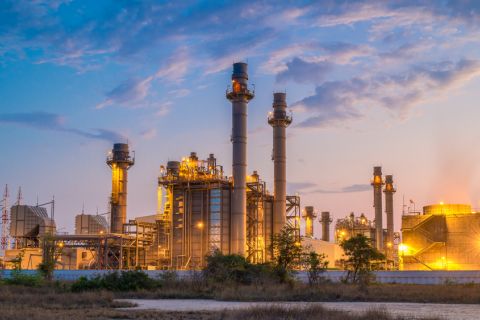Drilling makes the difference
How many times have you heard “we can’t drill our way to energy independence?” For many years now, legislators in the US have continually fought to prevent drilling operations from appearing in many of the country’s most prolific regions for natural resources like oil and gas – from onshore federal lands to offshore regions on the West, East, and Eastern Gulf Coasts.
The Energy Information Administration has published comprehensive US proved reserves data since 1977. The 2007 Annual Report of U.S. Crude Oil, Natural Gas, and Natural Gas Liquids Reserves (issued October 16, 2008) marks the thirty-first installment and shows record-high growth for dry natural gas and an addition to crude oil reserves for the first time in four years.
In 2007, the US recorded additions in proved reserves of dry natural gas – 46.1 Tcf, which is more than double than the amount of dry natural gas actually produced in 2007 (19.5 Tcf). The year-end total of proved reserves of dry natural gas in the US rose 13% above 2006 levels to 237.7 Tcf. This is the highest level in 31 years. Rapid development of unconventional resources such as coalbed methane and shale gas from tight, low permeability formations proved to add most of the additions.
The EIA estimates are based on a snapshot of what can be produced with reasonable certainty. Estimates can change as new discoveries and improving technologies increase. Changing prices can also alter estimates of proved reserves. If the reserves additions are greater than production, reserves increase, if they are less then estimates are reduced.
According to the report, 2007 was the ninth consecutive year that US natural gas proved reserves rose. The important point is that this year the rate of increase was more than twice as any year in the history of EIA data reporting. The proved reserves additions were developed through two broad categories: total discoveries (accounting for 63% or 29 Tcf of gas additions) and net revisions.
The report also noted additions to crude oil in the US for the first time in four years. Year end reserves for crude oil were 21.3 billion bbl, about 2% higher than at the end of 2006. Alaska saw the largest 2007 increase of 7% (284 million bbl) over 2006. This was followed closely by Texas with a 5% increase (251 million bbl) for the year. North Dakota, home to the Bakken formation, had the third largest increase of 70 million bbl of crude oil – up 17% from its 2006 reserves. Total discoveries of crude oil for 2007 in the US equaled 790 million bbl, which was 28% lower than the prior 10-year average (1.1 billion bbl) although it was 37% greater than in 2006 (577 million bbl). The majority of reserves additions to crude oil came form field extension operations however new field discoveries doubled in 2007 over 2006 (66 million bbl). Additionally, new reservoir discoveries in old fields were 70% higher in 2007 than in 2006.
This has been attributed to more aggressive drilling programs in many regions throughout the US. According to Baker Hughes, about 80% of the wells being drilled in the US have been for natural gas, which sheds light on the major increase in reserves.
Another hackneyed line you may be tired of hearing claims that the US contains 3% of the world’s reserves and consumes 25% of its resources. The EIA report shows the capacity for the US to up its reserves despite the fact that for 26 years approximately 85% of the country’s most vital lands have locked from exploration. With the offshore drilling ban now lifted it will be interesting to see how much increase will be shown in the EIA’s next Annual Report.
To see the full report visit http://www.eia.doe.gov/pub/oil_gas/natural_gas/data_publications/advanced_summary/current/adsum.pdf
Recommended Reading
Chevron’s Wirth: Biden Admin Needs to Embrace, not Attack Natgas
2024-09-17 - Chevron CEO Mike Wirth, speaking at Gastech Houston 2024, said natural gas offers a clear path to lowering CO2 emissions that only politics can derail.
Electrification Lights Up Need for Gas, LNG
2024-09-20 - As global power demand rises, much of the world is unable to grasp the need for gas or the connection to LNG, experts said.
Behind the Hype: The 'Jaw-dropping' Expectations for AI, Natural Gas
2024-09-05 - Anecdotal evidence suggests "jaw-dropping" energy needs as AI data centers come online, but building up the power supply will be a complicated process for producers and midstream companies.
Psst: NatGas Futures Haven’t Priced in AI Power Demand Yet
2024-10-23 - Gas-fired power demand is coming for AI-enhanced data generation as Microsoft, Amazon and others race to stay on top—and not go the way of IBM—analysts said at a Pittsburgh energy forum.
Gas-fired Power Generation Sets New Records Over Summer: EIA
2024-10-08 - Hot temperatures and cheap prices continue to increase demand from utilities, spurring the record consumption of natural gas to generate electricity, according to the U.S. Energy Information Administration.





